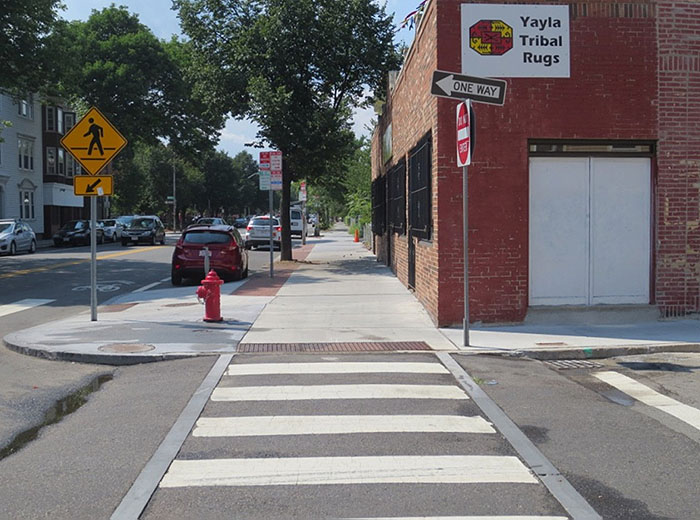This past Saturday and again on Sunday a driver failed to stop at the intersection of Cherokee Street and Compton Avenue heading westbound on Cherokee crashing into cars which had stopped and were proceeding into the intersection. In the case of the crash on Saturday the driver of the southbound car is in the ICU. The passengers had minor injuries. A parked car was hit as well, and a passenger had a tooth knocked out. In either no one outside the vehicles was hit.
STL-Style is located on the northeast corner and caught the carnage on their security cameras. This is by no means the first crashes at the intersection. In 2017 a police officer crashed his vehicle into the building.
Cars blow through the stop signs daily- we see (or hear) of near-accidents at least once a week, and have witnessed at least a dozen accidents over the last five or so years. A few years ago, a cyclist got hit HARD by a car that blew the stop sign and was rushed to the hospital with a possible head injury. In 2017, a stolen car smashed into the support column of our main entrance. Then, eight months later a police cruiser in pursuit of a stolen car jumped the curb and crashed into the front of our shop, damaging the Cherokee façade. It’s a crazy intersection!
Jeff Vines
Saturday April 9, 2022 looking west on Cherokee. Warning these images are disturbing
Looking south on Compton
Sunday April 10th, 2022
Cherokee Street is meant to be a street-
The function of a street is to serve as a platform for building wealth. On a street, we’re attempting to grow the complex ecosystem that produces community wealth. In these environments, people (outside of their automobiles) are the indicator species of success. Successful streets are environments where humans, and human interaction, flourish.
Strong Towns – The Stroad
Cherokee started that way long before the automobile came along. The area between the curbs was ceded to the automobile as a result of the coordinated social-engineering effort to expel all but the car in the early 20th century. We see the worst of auto-supremacy reflected in the crashes shown above. The straight shot doesn’t offer much friction for a driver, promoting driving at speeds inappropriate for a complex environment like Cherokee.

What can we do to calm traffic to better leverage the powerful dynamism that a good street produces? St. Louis’ primary traffic-calming tool has been blocking streets entirely with Schoemehl pots or something fancier. Those are mostly on primarily residential streets though. Let’s consider other options in the traffic-calming toolbox to move Cherokee from an auto-dominant street to an auto-accommodating one where the street communicates the appropriate speed instead of just a speed limit sign. The speed limit is 30 mph on Cherokee. It should be 20 or 15 and the street’s design should match it.
A traffic circle, aka mini roundabout, would block the driving lanes requiring a driver to go around to proceed through or to make a left turn. A reckless or distracted driver would hit the traffic circle instead of another driver. Curb bump outs provide for better visibility between drivers and people attempting to cross.
NACTO – Mini Roundabout


There is a traffic circle at Nebraska and Sidney. It cost about $40k. Sounds like a lot, but cheaper than the cost of the crash on Saturday, I’d wager.

Jeff Vines would like to see raised crosswalks. Instead of the sidewalk sloping down to the street at a crosswalk the street would rise up to meet the height of the sidewalk. The next level would be raising the whole intersection.

FHWA – Raised Crosswalk
NACTO – Raised Intersection
There are other options. Check out the links below. A combination of traffic calming techniques along the 1.35 miles from Gravois to Broadway, not just something at Compton, is in order to leverage fully the potential of Cherokee.
Federal Highway Administration – Toolbox of Individual Traffic Calming Measures
National Association of City Transportation Officials – Urban Street Design Guide
PS – Motor mania is as old as the automobile. Check out this over 70-year-old Disney cartoon.

